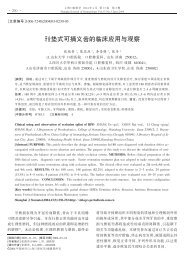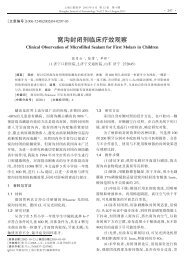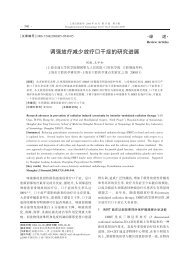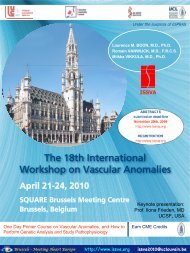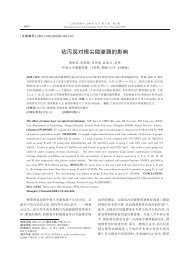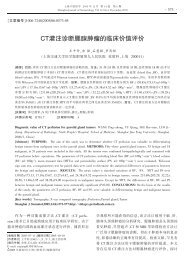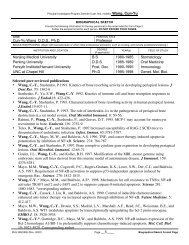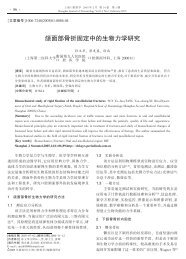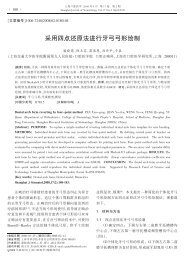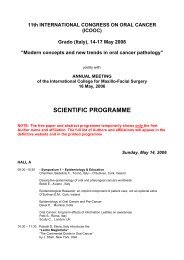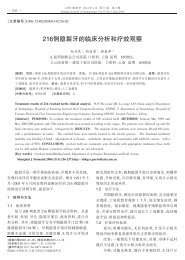core curriculum cleft lip/palate craniofacial anomalies
core curriculum cleft lip/palate craniofacial anomalies
core curriculum cleft lip/palate craniofacial anomalies
Create successful ePaper yourself
Turn your PDF publications into a flip-book with our unique Google optimized e-Paper software.
Core Curriculum for Cleft Palate and other Craniofacial Anomalies<br />
3. Phonation: Voice quality, the perceptual characteristics of voice.<br />
a. Hoarseness – a periodic vibration of the vocal folds producing a<br />
“rough” vocal quality.<br />
b. Breathiness – excessive leakage of air through the glottis during<br />
phonation.<br />
c. Pitch – sound property determined by the frequency of vibration of<br />
the vocal folds, either high, optimal, or low.<br />
d. Volume – acoustic power or intensity.<br />
4. Assessment<br />
a. Perceptual<br />
1) Standardized articulation testing<br />
2) Assessment of perceived oral-nasal resonance balance during<br />
connected speech<br />
b. Nasometer – nasalance, which provides a numeric output indicating<br />
the relative amount of nasal acoustic energy.<br />
c. Aerodynamic Measurements – pressure flow studies estimating the<br />
sectional area of VP orifice (i.e., PERCI).<br />
d. Assessment of oral structure and function.<br />
1) Face: symmetrical structure and function; drooling<br />
2) Lips: degree of bilabial contact, non-speech function, position<br />
during quiet breathing<br />
3) Dentition: occlusion, crossbite, open/closed bite,<br />
over/underbite, ectopic teeth, missing, rotated, or<br />
supernumerary, dental arch collapse, dental appliances<br />
4) Tongue: deviation, lobule, frenulum, tongue thrust, non-speech<br />
function (range, strength, and symmetry of motion)<br />
5) Hard <strong>palate</strong>: height, contour, width, oronasal fistulae<br />
6) Tonsils/faucial pillars: size, position, and symmetry of tonsils,<br />
movement of pillars<br />
7) Soft <strong>palate</strong>: symmetry at rest and during phonation; lateral and<br />
vertical degree of movement, uvula<br />
8) Submucous <strong>cleft</strong> <strong>palate</strong>: bifid/notched uvula, zona pellucidum or<br />
transparency of the <strong>palate</strong> at midline, bony notching at the<br />
posterior border of the hard <strong>palate</strong><br />
9) Pharyngeal walls: vertical/lateral/symmetry of movement<br />
e. Imaging Studies<br />
If VP dysfunction is suspected, direct visualization is required to<br />
evaluate velopharyngeal functioning during speech production using<br />
oral and nasal consonants in words, phrases, and sentences.<br />
1) Nasopharyngoscopy: degree of velopharyngeal closure for<br />
speech production and swallowing, velopharyngeal closure<br />
pattern, symmetry, velar contour, movement (velum, lateral<br />
pharyngeal and posterior pharyngeal walls, Passavant’s ridge),<br />
adenoids/tonsils, laryngeal structure, and function<br />
31<br />
© 2004 American Cleft Palate-Craniofacial Association



